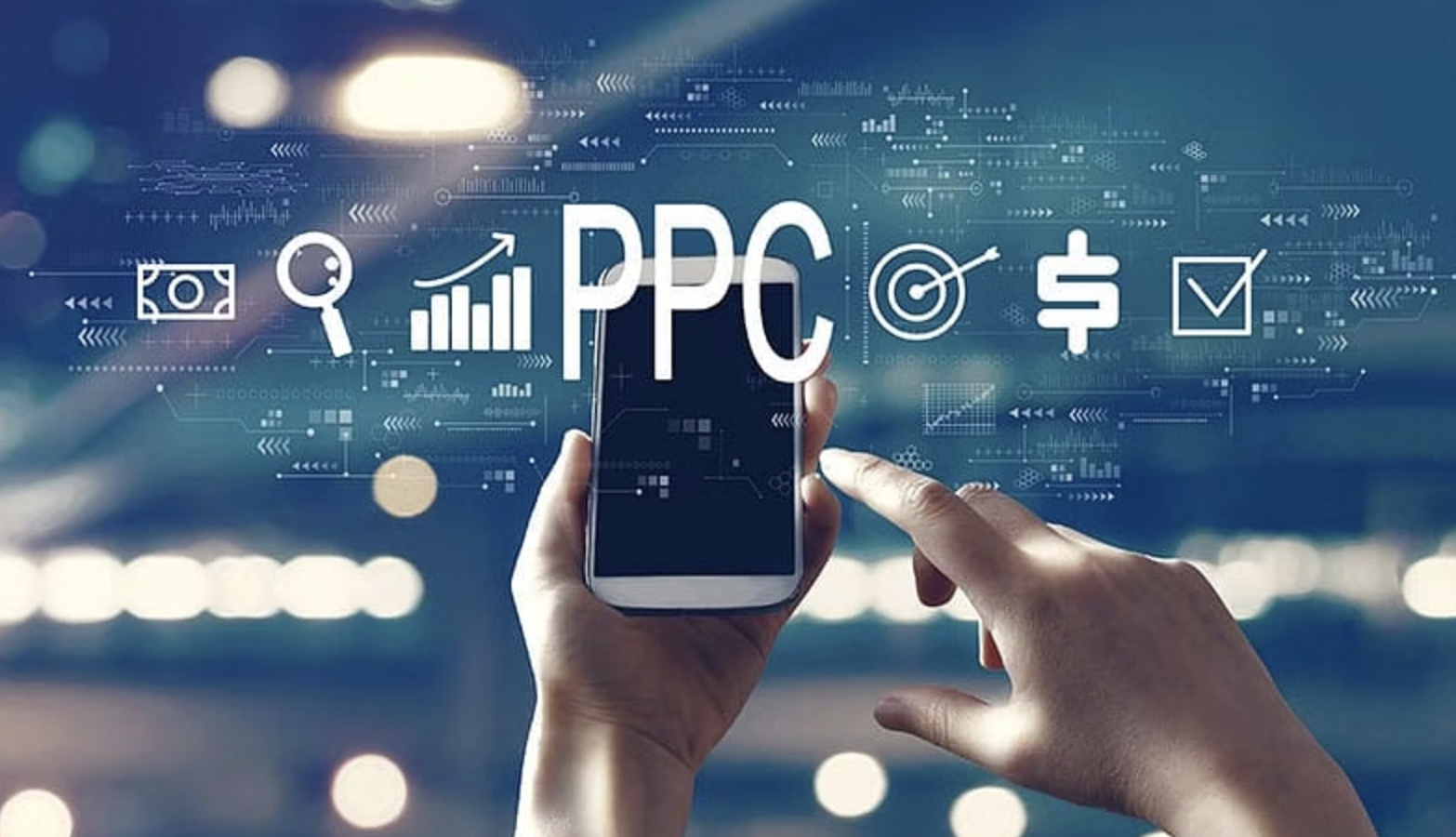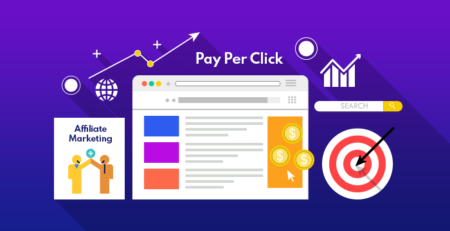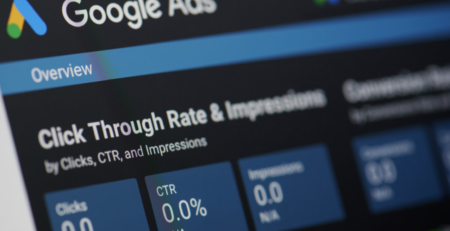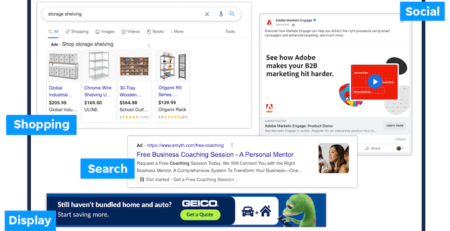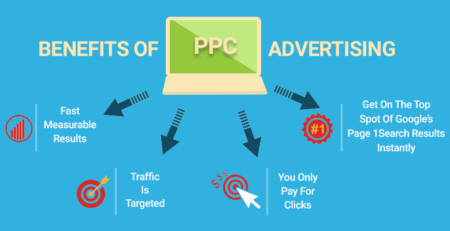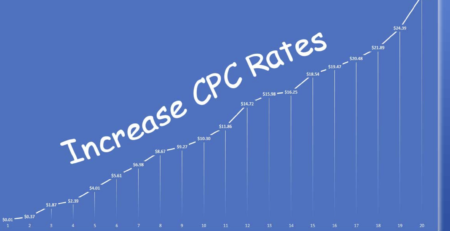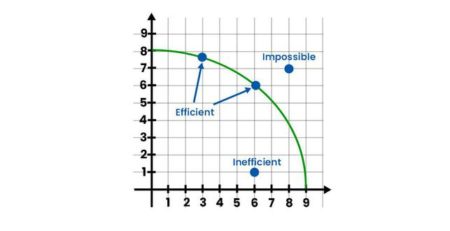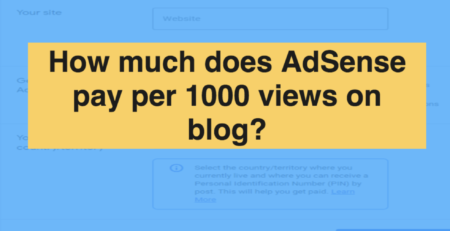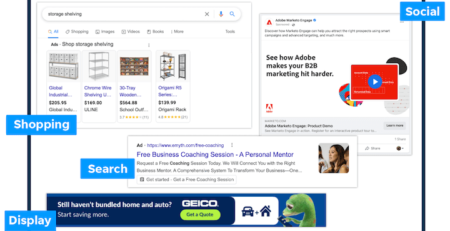How To Get Pay Per Click On My Website?
If you’re wondering how to get pay-per-click on your website, you’ve come to the right place! Pay-per-click, or PPC, is a powerful advertising method that can drive targeted traffic to your site. In this article, we’ll show you the ropes and help you understand the ins and outs of getting PPC on your website. So, let’s dive in and explore the world of pay-per-click advertising together!
First things first, let me explain what pay-per-click means. Imagine this: when someone searches for something on a search engine like Google, they see a list of results. But among these results, there are usually some ads that appear at the top or bottom of the page. Those are pay-per-click ads! The beauty of PPC is that you only pay for these ads when someone actually clicks on them, hence the name.
Now, you might be wondering, how can I get these pay-per-click ads on my website? Well, there are a few steps involved. You’ll need to set up an account with a PPC platform, create your ad campaign, choose your target audience, select relevant keywords, and set your budget. Don’t worry, we’ll break it down for you and guide you through each step. By the end, you’ll be a PPC pro and ready to start driving traffic to your website!
So, are you excited to learn how to get pay-per-click on your website? Great! Let’s get started and get ready to boost your online presence through the power of PPC advertising. Get ready to attract visitors, increase conversions, and achieve your website goals. It’s time to take your website to new heights with pay-per-click!
1. Understand Pay Per Click (PPC) advertising and its benefits.
2. Set goals for your PPC campaign and determine your target audience.
3. Conduct keyword research and select relevant keywords.
4. Create compelling ad copy and landing pages.
5. Set up your PPC campaign using platforms like Google AdWords.
6. Monitor and optimize your campaigns to maximize results and ROI.
7. Stay updated with industry trends and adapt your strategy accordingly. Start driving targeted traffic to your website now!
 How to Get Pay Per Click on My Website?
How to Get Pay Per Click on My Website?
Welcome to the ultimate guide on how to get pay per click on your website! If you’re looking to generate targeted traffic, increase conversions, and earn revenue through your website, pay per click (PPC) advertising is an effective strategy to consider. In this article, we’ll dive into the world of PPC, exploring different platforms, tips, and best practices that will help you maximize your results and get the most out of your PPC campaigns. So, let’s jump right in!
The Basics of Pay Per Click
Before we delve into the techniques to get pay per click on your website, it’s important to understand the fundamentals of PPC advertising. Pay per click is a model of online advertising in which advertisers pay a fee each time their ad is clicked. Unlike traditional forms of advertising, where you pay a fixed amount regardless of performance, PPC allows you to only pay when someone interacts with your ad by clicking on it. This makes it a cost-effective and measurable method to drive targeted traffic to your website.
There are several popular PPC platforms that you can leverage to promote your website, such as Google Ads, Microsoft Advertising, and social media platforms like Facebook Ads and Instagram Ads. Each platform offers unique targeting options, ad formats, and audience reach, giving you the flexibility to tailor your campaigns to your specific goals and target audience.
Now that we have a basic understanding of PPC, let’s explore some strategies to get pay per click on your website.
1. Define Your PPC Goals and Budget
Before you dive into setting up your PPC campaigns, it’s crucial to define your goals and budget. Ask yourself: What do you want to achieve with your PPC advertising? Are you aiming to increase website traffic, generate leads, promote specific products or services, or boost brand awareness?
Once you have a clear goal in mind, you can allocate a budget that aligns with your objectives. Consider how much you’re willing to invest in your PPC campaigns, keeping in mind that PPC is an auction-based system, and costs can vary depending on factors like industry competitiveness and ad quality.
By setting measurable goals and establishing a budget, you’ll have a solid foundation to build your PPC campaigns on.
2. Conduct Keyword Research
Effective keyword targeting is the backbone of successful PPC campaigns. Conducting thorough keyword research will help you identify relevant search terms that your target audience is using to find products or services similar to yours.
Start by brainstorming keywords related to your business, products, or services. Then, use keyword research tools like Google Keyword Planner, SEMrush, or Moz Keyword Explorer to expand your list and discover new keyword opportunities. Look for keywords with high search volumes, low competition, and strong relevance to improve your chances of capturing valuable traffic.
Remember to focus on long-tail keywords, which are more specific and have a higher likelihood of leading to conversions. For example, instead of targeting the broad keyword “shoes,” consider targeting “black leather running shoes for women.”
3. Create Compelling Ad Copy
Once you have your keywords, it’s time to craft compelling ad copy that grabs users’ attention and entices them to click on your ads. Your ad copy should be concise, clear, and aligned with the intent behind the search query.
Highlight the unique selling points of your products or services, incorporate strong calls to action, and use ad extensions to provide additional valuable information. Tailor your ad copy to resonate with your target audience, addressing their pain points and showcasing how your offering can solve their problems or fulfill their needs.
Remember to continuously test and optimize your ad copy to improve your click-through rates and overall campaign performance.
4. Optimize Landing Pages
Your PPC campaigns are only as effective as the landing pages they lead to. When a user clicks on your ad, they should be directed to a highly relevant and optimized landing page that provides a seamless user experience.
Ensure that your landing page aligns with the ad copy and keywords used in your PPC campaign. Make sure the page loads quickly, is mobile-friendly, and has a clear and persuasive call-to-action. Optimize the content to be engaging and focused, emphasizing the benefits of your offerings.
Test different landing page elements, such as headlines, visuals, and forms, to determine what resonates best with your audience and drives conversions.
5. Monitor and Optimize Your Campaigns
Setting up your PPC campaigns is just the beginning. To get the most out of your pay per click efforts, ongoing monitoring and optimization are key. Regularly review your campaign data and make data-driven decisions to improve performance.
Monitor metrics like click-through rates, conversion rates, and cost per click to gauge how well your campaigns are performing. Identify underperforming keywords or ad copies and make adjustments to optimize them. Experiment with ad scheduling, geographic targeting, and audience segmentation to refine your targeting and improve your campaign’s efficiency.
Furthermore, leverage the tracking and reporting capabilities of your chosen PPC platform to gain insights into user behavior and identify areas for improvement.
6. Utilize A/B Testing
A/B testing allows you to compare different versions of your ads, landing pages, and other campaign elements to determine which ones perform better. By testing and optimizing various variables, you can fine-tune your PPC campaigns and improve their effectiveness.
For example, you can test different headlines, ad copy variations, call-to-action buttons, or even completely different landing page layouts. Split your audience into two or more groups and present each group with a different version of your campaign. Measure the results and identify the elements that drive the highest engagement and conversions.
Continuously testing and refining your campaigns based on A/B test results will help you uncover the winning formula for maximizing your pay per click efforts.
7. Stay Up-to-Date with Industry Trends
Paying attention to industry trends and changes in the PPC landscape is crucial to staying ahead of the competition and continually improving your results. Platforms like Google Ads and social media advertising channels often introduce new features, targeting options, or ad formats.
Stay informed by following industry blogs, attending conferences, and participating in relevant communities. Engage with industry experts and fellow advertisers to exchange insights and best practices. By staying up-to-date, you can adapt your strategies and take advantage of emerging trends to gain a competitive edge.
Additional Strategies to Enhance Your Pay Per Click Campaigns
Alongside the above tips, there are several additional strategies and tactics you can incorporate to enhance your pay per click campaigns:
1. Remarketing: Re-engage with potential customers who have previously visited your website by showing them targeted ads across different platforms.
2. Competitor Analysis: Analyze your competitors’ PPC strategies to gain insights into their keyword targeting, ad copy, and overall approach.
3. Ad Extensions: Take advantage of ad extensions like sitelink extensions, call extensions, or review extensions to provide users with more information and increase ad real estate.
4. Negative Keywords: Utilize negative keywords to fine-tune your targeting and avoid irrelevant clicks.
5. Mobile Optimization: Optimize your campaigns for mobile devices, as an increasing number of users are accessing the internet through their smartphones.
6. Budget Allocation: Continuously assess and adjust your budget allocation across campaigns and channels to optimize your return on investment.
7. Landing Page Personalization: Implement personalization tactics on your landing pages to create a more tailored and engaging experience for users.
By incorporating these additional strategies and continuously optimizing your PPC campaigns, you can maximize your chances of achieving your goals and generating an excellent return on investment.
Conclusion
Now that you have a comprehensive understanding of how to get pay per click on your website, it’s time to put these strategies into action. Remember to define your goals, conduct thorough keyword research, create compelling ad copy, optimize your landing pages, monitor and optimize your campaigns, utilize A/B testing, and stay up-to-date with industry trends. By following these best practices and continually refining your approach, you’ll be well on your way to reaping the benefits of pay per click advertising on your website.
Key Takeaways: How to Get Pay Per Click on My Website?
- Choose relevant keywords that are commonly searched for on search engines.
- Create compelling ad copy with a clear call to action to attract clicks.
- Optimize your landing page to provide a seamless user experience.
- Set a reasonable budget and monitor your campaign performance regularly.
- Experiment with different ad formats and targeting options to maximize your click-through rate.
Frequently Asked Questions
Welcome to our Frequently Asked Questions section where we address common queries about getting pay-per-click on your website. If you’re looking to drive more traffic and increase revenue, pay-per-click advertising can be a valuable strategy. Let’s dive into some questions you may have:
Q1: How does pay-per-click advertising work?
Pay-per-click (PPC) advertising is an online advertising model where advertisers pay a fee each time their ad is clicked. Essentially, it’s a way of buying visits to your website rather than earning them organically. When a user searches for a particular keyword on a search engine, relevant ads are displayed, and advertisers bid for their ad to appear in those search results. If your bid is successful and your ad gets clicked, you pay the search engine a certain amount.
PPC can be an effective way to draw targeted traffic to your website, as you only pay when someone clicks on your ad. Additionally, PPC platforms provide you with various targeting options, allowing you to reach specific audiences based on factors like location, demographics, and browsing behavior.
Q2: How do I set up a pay-per-click campaign?
To set up a pay-per-click campaign, follow these steps:
1. Define your advertising goals and budget: Determine what you want to achieve with your campaign and how much you’re willing to spend.
2. Choose the right PPC platform: Research different PPC platforms like Google Ads, Microsoft Advertising, or Facebook Ads, and choose the one that aligns with your target audience and goals.
3. Conduct keyword research: Identify relevant keywords that your audience is likely to search for and create a list of targeted keywords for your ads.
4. Create compelling ad copy: Craft engaging ad headlines and descriptions that entice users to click on your ads.
5. Set up landing pages: Create dedicated landing pages that align with your ad copy and provide a seamless user experience, increasing the chances of conversion.
6. Monitor and optimize: Continuously track the performance of your campaigns, make adjustments based on the data, and optimize your ads and landing pages to maximize results.
Q3: How can I improve the click-through rate (CTR) of my PPC ads?
A high click-through rate (CTR) is crucial for the success of your PPC campaign, as it indicates that your ads are resonating with your target audience. Here are a few tips to improve your CTR:
1. Use relevant keywords: Ensure your keywords match the intent of your audience and are included in your ad copy.
2. Write compelling ad copy: Craft attention-grabbing headlines and compelling descriptions that clearly communicate the value your ad offers.
3. Include a strong call-to-action: Encourage users to take the desired action by using persuasive language and clear instructions.
4. Test different ad variations: Experiment with different ad formats, headlines, and descriptions to identify the ones that drive the highest CTR.
5. Optimize your landing pages: Ensure that your landing pages provide a seamless experience by aligning with your ad copy, being mobile-friendly, and loading quickly.
Q4: How can I track the success of my pay-per-click campaigns?
To track the success of your pay-per-click campaigns, you can use various metrics and tools:
1. Conversion tracking: Set up conversion tracking to measure the actions users take on your website after clicking on your ads, such as purchases, form submissions, or newsletter sign-ups.
2. Click-through rate (CTR): Monitor your CTR to assess how well your ads are performing and attracting clicks.
3. Cost per click (CPC): Keep an eye on your average cost per click to understand how much you’re spending for each click on your ads.
4. Quality Score: Platforms like Google Ads assign a quality score to your keywords and ads, which affects your ad rank and cost per click. Aim for a high-quality score by offering relevant, high-quality content.
5. Analytics tools: Utilize analytics tools like Google Analytics to gain deeper insights into your website’s performance, behavior flow, and user engagement.
Q5: Are there any pitfalls to watch out for when running a PPC campaign?
While pay-per-click advertising can be highly effective, there are a few pitfalls to be aware of:
1. Overspending: It’s crucial to set a budget and monitor your spending closely to avoid overspending on your PPC campaigns.
2. Poor keyword selection: Choosing irrelevant or low-performing keywords can result in wasted ad spend and low conversion rates. Conduct thorough keyword research.
3. Weak ad copy: Writing uninspiring or unclear ad copy can lead to low click-through rates and poor campaign performance. Ensure your ad copy is compelling.
4. Neglecting landing page optimization: If your landing pages are slow to load, not mobile-friendly, or have a poor user experience, visitors will likely bounce, wasting your ad budget.
5. Lack of ongoing optimization: PPC campaigns require continuous monitoring and optimization. Failing to do so can result in missed opportunities and suboptimal performance. Regularly review and adjust your campaigns based on data and insights.
Summary
So, you want to get pay per click on your website? Here’s what you need to know. Pay per click (PPC) is a way to advertise on the internet and get paid when people click on your ads. First, choose the right PPC platform that matches your goals and budget. Then, do keyword research to identify the words and phrases people are searching for. Create compelling ad copy that grabs attention and includes relevant keywords. Set a budget for your PPC campaign and carefully track your results to optimize your ads. Remember, it takes time and effort to see success with PPC, so be patient and keep refining your strategy.
In conclusion, getting pay per click on your website involves choosing the right platform, doing keyword research, creating compelling ads, setting a budget, and tracking your results. With persistence and optimization, you can increase your website traffic and potentially earn money through PPC. So, get started and watch your online presence grow!

